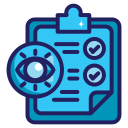Bridging Understanding Gaps with Visual Requirement Tools
Chosen theme: Bridging Understanding Gaps with Visual Requirement Tools. Welcome to a place where ideas turn into shared pictures, ambiguity shrinks, and teams align faster. Dive in, learn visual methods that speak to everyone, and subscribe to get practical templates, exercises, and real stories from the field.
Dual Coding Meets Delivery
Our brains process pictures and words differently, and using both strengthens recall and comprehension. When requirements are sketched as flows, maps, or models, stakeholders agree faster and engineers make fewer assumptions, reducing rework and support tickets across the entire product lifecycle.
A Late-Night Diagram That Saved a Sprint
On a Friday evening, a product trio replaced a heated email thread with a quick swimlane diagram. Fifteen minutes later, they spotted a missing handoff. That drawing prevented an integration misfire that would have cost a week, and it kept the release on track.
A Practical Toolkit of Visual Requirement Tools
Story maps organize slices of value by user activities, revealing what matters first. Teams use them to negotiate scope, plan releases, and maintain a narrative thread. Add acceptance criteria beneath each slice, and invite stakeholders to vote on what truly solves the problem.
A Practical Toolkit of Visual Requirement Tools
Business Process Model and Notation clarifies who does what, when, and in what order. Swimlanes expose costly baton drops between teams. Use them in discovery to align operations, product, and compliance, and record notes on exceptions that later become explicit test scenarios.
A Practical Toolkit of Visual Requirement Tools
Wireflows combine lightweight screens with arrows to show movement and decisions. State diagrams document allowed transitions, preventing impossible screens and dead ends. Share these early with QA to seed test cases and with developers to confirm how components should react under edge conditions.


Turning Conversation into Visuals
During interviews, note intents, triggers, and outcomes, not only feature requests. Mark emotional spikes and confusions. These signals become decision diamonds, annotations, and states in your diagrams, ensuring that visuals reflect the human story behind the requirement, not merely the surface asks.
Turning Conversation into Visuals
Start with pen and paper or a whiteboard before formalizing. Low-fidelity sketches encourage debate and honesty. Once the structure feels right, move into Figma, Miro, or PlantUML to polish. Keep every arrow purposeful and every label specific to prevent misinterpretation later in delivery.

Making Visuals a Shared Language
Agree on basic symbols and colors so your visuals are predictable. For example, green arrows for happy paths, orange for exceptions, and red for blockers. Publish a one-page legend and add it to every diagram. Consistency builds trust and speeds comprehension across teams.
Making Visuals a Shared Language
Turn callouts on diagrams into concrete acceptance criteria. Each note should state a condition, behavior, and outcome. Link these to user stories so QA and developers can trace expectations. Ask readers to comment with missing cases, and we will feature the best suggestions in next week’s post.
Defect Leakage Tied to Requirements
Tag production defects by source. If requirement-related defects drop after adopting diagrams, you have evidence that visuals are paying off. Combine this with rework hours saved, and present the trend to leadership to secure more time for discovery and refinement.
Comprehension Checks Before Build
Run a five-minute comprehension quiz after walkthroughs. Ask participants to identify edge cases, states, and ownership. Aim for ninety percent accuracy before coding begins. Share anonymized results with the team to normalize learning and spotlight parts of the diagram that remain confusing.
Review Cycle Time and Decision Latency
Measure how long it takes to resolve requirement questions. Visuals should shorten review loops and accelerate approvals. If latency persists, examine whether the diagram hides complexity or lacks operational detail, then iterate and retest with a smaller, focused stakeholder group.
Asynchronous First, Meetings Second
Post diagrams with context, questions, and a deadline for comments. Use threaded discussions near relevant nodes. Summarize decisions before scheduling a call. This keeps meetings focused on disagreements, not discovery, and respects time zones without sacrificing the quality of collaboration.
Versioning and Decision Logs
Name files by product area, date, and decision. Keep a lightweight changelog on the canvas. When scope shifts, create a new layer instead of overwriting the old path. This preserves traceability so onboarding teammates can see how the requirement evolved over time.
Facilitation That Energizes
Use warm-up prompts like “show me the riskiest edge case” to engage the room. Rotate the marker between roles so power dynamics soften. Close by voting on the clearest area and the most confusing area, then publish a follow-up plan subscribers can track over the next sprint.

Keeping Visuals Alive Through Delivery
Embed diagram links inside user stories, tasks, and test suites. Tag nodes with story IDs. When code merges, update the diagram to reflect reality. This tight loop prevents drift between what was agreed and what was built, reducing confusion during handover and support.
Keeping Visuals Alive Through Delivery
Complement product flows with C4 or sequence diagrams for services and events. Map states to database entities to avoid mismatched assumptions. Invite your architect to annotate hotspots where scalability matters, and capture those concerns as explicit non-functional acceptance criteria.


